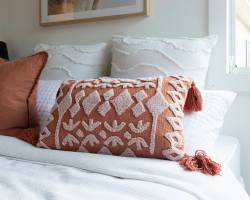
The Case for Persian Rugs: Timeless, Textured, and Surprisingly Modern
Persian rugs have been around for centuries—woven by hand, dyed with botanicals, passed down across generations. They carry a sense of heritage, yes. But what often gets overlooked is how incredibly flexible they are in a modern interior. Whether your style leans minimal, rustic, industrial, or even brutalist, a Persian rug doesn’t clash—it grounds. It adds movement to still rooms, depth to flat palettes, and soul to new builds. Here’s why they work so well—and how to use one without making your space feel like a set piece from an antiques showroom.
1. They Bridge Old and New Effortlessly
A Persian rug instantly softens sleek or minimal interiors. In a room full of clean lines—think steel, concrete, pale wood—it introduces something less rigid. The curves of the patterns, the warmth of the tones, the sense of handwork all play against modern forms beautifully.
This balance is what makes them feel fresh. You’re not layering old on old—you’re interrupting something clean with something storied.
2. They Read as Neutral—Even When They’re Not
While the color palettes of Persian rugs are often rich—burgundy, indigo, ochre—they behave more like neutrals in a space. That’s because the patterns are tight, repetitive, and symmetrical. The eye reads them as texture rather than noise.
You can pair a Persian rug with almost any upholstery, wall color, or wood tone. And unlike solid color rugs, they don’t show dirt or wear as easily—meaning they age well and work hard.
3. They Add Movement to Flat Spaces
In rooms dominated by block colors, clean edges, or monochrome palettes, a Persian rug acts like a current under the surface. The intricate motifs draw the eye around the room. It’s a kind of visual energy that’s hard to replicate with modern geometric rugs or plain wools.
And because no two are identical, you never get the overly staged, showroom look. Even when paired with modern furniture, a Persian rug insists: this space has personality.
4. They’re More Durable Than Most Modern Alternatives
Hand-knotted Persian rugs—especially wool-based ones—are built to last. Unlike mass-produced rugs made from polypropylene or blended synthetics, these are naturally resistant to dirt, wear, and compression. With the right care (a simple rotation every few months and a professional clean every couple of years), they can last decades.
This makes them not just a stylistic choice, but a long-term investment—especially if you’re tired of replacing rugs every few seasons.
5. They Work in Unexpected Spaces
Persian rugs aren’t just for living rooms. Use a narrow runner in a hallway to create warmth underfoot. Layer a small one in the kitchen near the sink or stove—yes, even there. In bedrooms, they lend softness and history without the bulk of wall-to-wall carpeting.
And if the palette feels too traditional? Pair it with contemporary lighting, clean-lined bedding, or matte black accents to shift the tone immediately.
6. They Age Well—And Can Evolve with You
Unlike trend-driven rugs that lose appeal after a season or two, Persian rugs gain character over time. A bit of wear only makes them more relaxed. Colors fade in a good way. Edges soften. The rug becomes less of a statement and more of a backdrop to your daily life.
And should your style change—say from Scandi minimalism to something moodier—you don’t need to replace it. You just style around it differently.
Final Word: Less of a Trend, More of a Constant
A Persian rug isn’t about nostalgia or trying to make your space look “cultured.” It’s about anchoring a room with something that lasts—something with visual depth, material honesty, and a story already woven in.
If you’re looking to invest in just one element that can move with you from apartment to house to future unknown, this is it.




